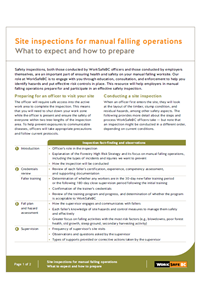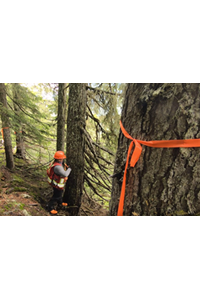Forestry Planned Inspectional Initiative
The Forestry Planned Inspectional Initiative is a comprehensive prevention initiative that addresses workplace safety in forestry operations. The intent of the initiative is to execute impactful inspections focused on the risks that drive the serious injury rate and the time-loss claims rate.
- Our goals
- Our focus
- What you can do
- Resources
These risks are linked to high-risk work activities that typically fall into five areas of operations:
- Manual tree falling
- Log transportation
- Cable yarding
- Mechanized harvesting (primary focus will be on steep slope and tethered/winch-assist operations)
- Silviculture
Other operations such as shake block cutting and dry land sorting will also be examined on a regional basis due to the increasing injury rates in these operations.
Our goals
The goals of the initiative are to:
- Raise awareness and promote adherence to safe work practices
- Reduce the serious injury and time-loss claims rates in forestry operations with the greatest risk exposure
Our focus
2024 inspectional approach
For 2024 inspections, prevention officers will take a risk-based approach to ensure that the most significant risks are effectively managed. This approach involves workers and employers identifying hazards, evaluating risks, and implementing the appropriate controls specific to the on-site activities. In addition, it focuses on employers ensuring these efforts are effectively communicated to workers and monitored through foundational occupational health and safety systems such as new and young worker orientations, training, supervision, incident investigations, worksite inspections, and (where applicable) joint health and safety committees that are robust, and well supported.
The current primary areas of focus for the initiative are based on risk and claims data. They are:
- Musculoskeletal injuries (MSI) in silviculture, shake/shingle, log hauling
- Slips, trips, and falls
- Struck-by logs, debris and line cable
- Struck by mobile equipment
- Equipment rollover due to the loss of stability in steep slope mechanical harvesting
- Noise exposure
Officers will:
- Promote effective "phase integration" to address risks that are compounded by having multiple harvesting phases conducted within a single operating area
- Examine emergency response planning (ERP) as a critical component of the risk management efforts
A dedicated inspection team will focus on employers who are involved in manual tree falling and supervision to ensure that workers and employers have appropriately assessed the risks, implemented controls to safely manage these risks, and ensure the work is adequately supervised (see Site Inspections for manual falling operations: What to expect and how to prepare).
What you can do
A healthy and safe workplace is a shared responsibility. The following resources will help you better understand and address some of the health and safety issues to focus on in your industry. For more resources and information, please visit our Forestry pages.



